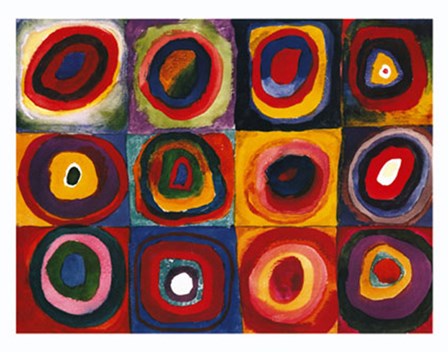by Fulcrum Gallery Staff
7. July 2013 15:48

It's almost a cliche in television and movies for a visitor confronted with abstract art to express their utter confusion and distaste at something that they not only don't understand themselves, but believe that no one in their right mind could comprehend it either. Are their passionately held and unwavering personal opinions a realistically accurate guide of the truth?
In 1910, the first original abstract art form was created by Wassily Kandinsky. Following that innovative development, in the early 1900's, some of the major developmental stages in the history of abstract art were developed. These developments included neo-plasticism, abstract expressionism, conceptual art, contemporary realism, photorealism, hyper realism, and neo-expressionism.
The three major forms of abstract art include cubism (Pablo Picasso and Georges), neoplasticism (Piet Mondrian), and abstract expressionism (Mark Rothko and Jackson Pollock). Popular varieties of abstract art today include abstract landscape art, 3D abstract art, and fantasy abstract.
It won't take you long to realize that utilizing abstract art is one of the most innovative and versatile ways to decorate your home or office. Abstract art offers many advantages, such as how easy it is to incorporate it into many different styles of interior design, particularly since it can be matched based upon colors. In fact, it's the wide range of colors used in abstract painting that makes it possible to change the color or feel of a room without having to replace the art on the walls. Interior designers are given the freedom to focus on creating a feel or general impression of a room rather than a specific motif.
Abstract art doesn't have to be the exclusive domain of a select group of self-proclaimed experts who say things like how a "particular piece embodies the contradictions inherent in existentialism while portraying the struggle of women's suffrage through color and shape". If you simply see a variety of shapes intermixed with colors in such a way that it strikes a chord in your imagination, and it ties a room together like nothing else could, then remember that abstract art and its appreciation belongs as much to you as to anyone else.

